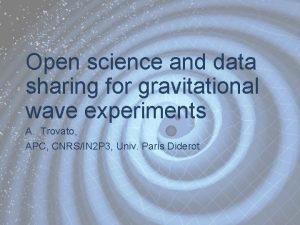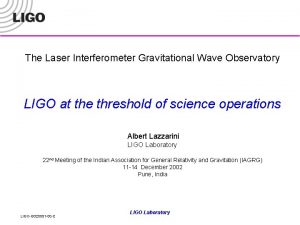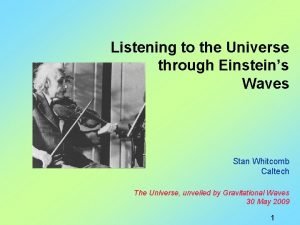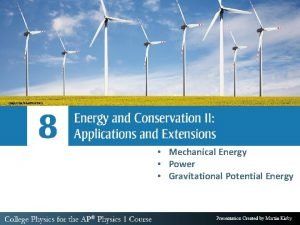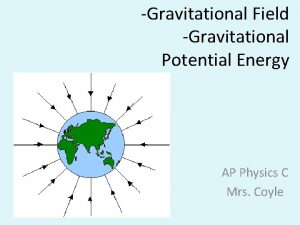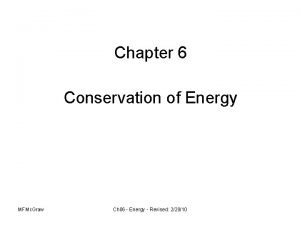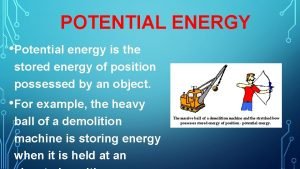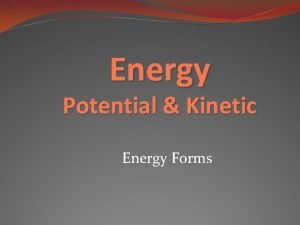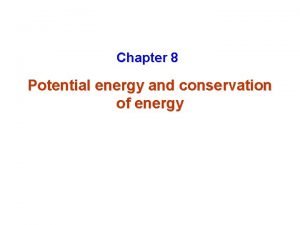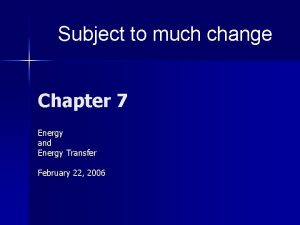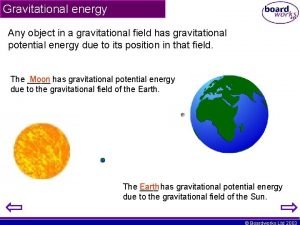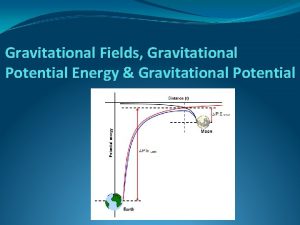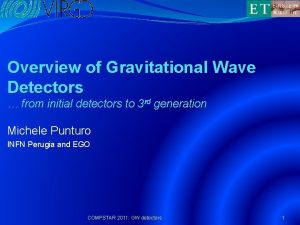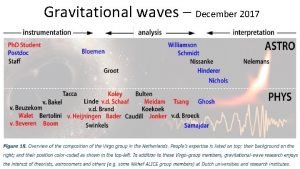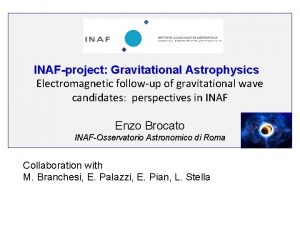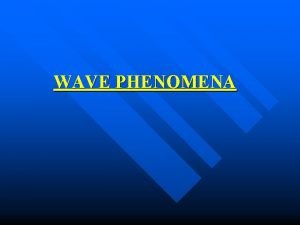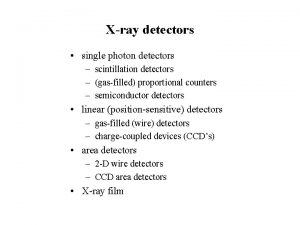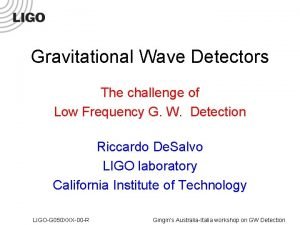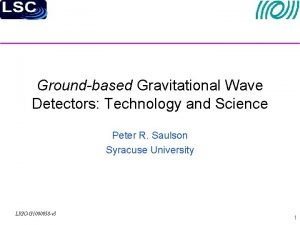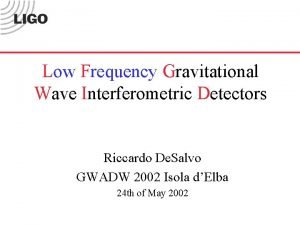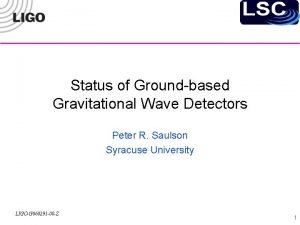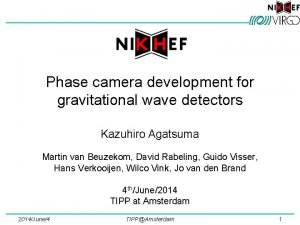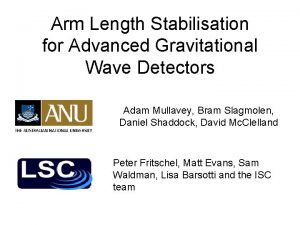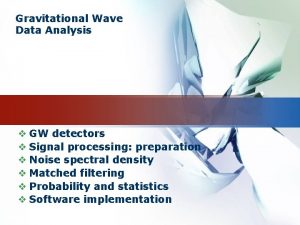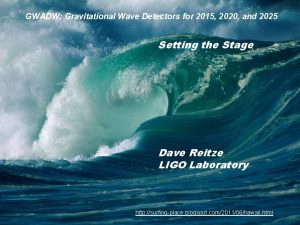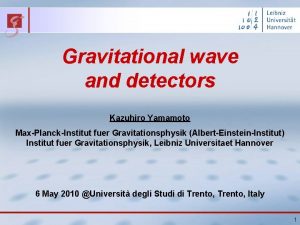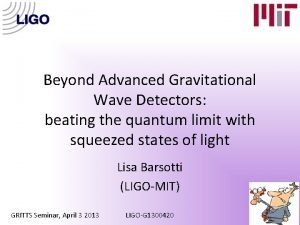High energy n Gravitational wave detectors New windows



![HEN detector motivation: Cosmic accelerators log [d. J/d. E] E-2. 7 Galactic Protons E-3 HEN detector motivation: Cosmic accelerators log [d. J/d. E] E-2. 7 Galactic Protons E-3](https://slidetodoc.com/presentation_image_h2/6ac2bf1b47dae51a865e93b00b747566/image-4.jpg)




















![The current limit [Achterberg et al. 07 (The Ice. Cube collaboration)] The current limit [Achterberg et al. 07 (The Ice. Cube collaboration)]](https://slidetodoc.com/presentation_image_h2/6ac2bf1b47dae51a865e93b00b747566/image-25.jpg)













- Slides: 38

High energy n & Gravitational wave detectors: New windows on the universe Eli Waxman Weizmann Institute, ISRAEL

Non electro-magnetic “messengers” Me. V n detectors: • Solar & SN 1987 A n’s • Stellar physics (Sun’s core, SNe core collapse) • n physics High energy n & GW detectors • New, non-EM windows • Penetrate deep into the source • Travel unhindered across the universe This talk • The Astrophysics case for HEN detectors • Relation to GW detectors • Fundamental physics

High energy n’s: A new window >0. 1 Te. V n detectors: • Extend n horizon to extra-Galactic scale Me. V n detectors limited to local (~Galactic) sources [10 kt @ 1 Me. V 1 Gton @ Te. V , s. Te. V/s. Me. V~106 ] • Study “Cosmic accelerators” [pg, pp p’s n’s] • n physics
![HEN detector motivation Cosmic accelerators log d Jd E E2 7 Galactic Protons E3 HEN detector motivation: Cosmic accelerators log [d. J/d. E] E-2. 7 Galactic Protons E-3](https://slidetodoc.com/presentation_image_h2/6ac2bf1b47dae51a865e93b00b747566/image-4.jpg)
HEN detector motivation: Cosmic accelerators log [d. J/d. E] E-2. 7 Galactic Protons E-3 Source: Supernovae(? ) X-Galactic (? ) Heavy Nuclei Source? Light Nuclei? Lighter Source? 1 106 1010 Cosmic-ray E [Ge. V] [Blandford & Eichler, Phys. Rep. 87; Axford, Ap. JS 94; Nagano & Watson, Rev. Mod. Phys. 00]

The 1020 e. V challenge v R /G B v G 2 2 R G 2 l =R/G (dt. RF=R/Gc) [Waxman 95, 04, Norman et al. 95]

What do we know about >1019 e. V CRs? • X-Galactic - RL=e/e. B=40 ep, 20 kpc >> hdisk=0. 1 kpc (kpc=3 light yr) - L>1012 (G 2/b) Lsun • Composition

Composition clues Hi. Res 2005

What do we know about >1019 e. V CRs? • X-Galactic - RL=e/e. B=30 ep, 20 kpc >> hdisk=0. 1 kpc (kpc=3 light yr) - L>1012 (G 2/b) Lsun • Composition- light nuclei? • Spectrum

Flux & Spectrum • E 2(d. N/d. E)=E 2(d. Q/d. E) teff. (teff. : p + g. CMB N + p) Assume: p, d. Q/d. E~(1+z)m. E-a cteff [Mpc] log(E 2 d. Q/d. E) [erg/Mpc 2 yr] GZK (CMB) suppression [Katz & Waxman 09] • >1019. 3 e. V: consistent with protons, E 2(d. Q/d. E) ~1043. 7 erg/Mpc 3 yr + GZK [Waxman 1995; Bahcall & Waxman 03] • E 2(d. Q/d. E) ~Const. : Consistent with shock acceleration [Krimsky 77; Bednarz & Ostrowski 98; Keshet & Waxman 05 cf. Lemoine & Revenu 06]

What do we know about >1019 e. V CRs? • X-Galactic - RL=e/e. B=30 ep, 20 kpc >> hdisk=0. 1 kpc (kpc=3 light yr) - L>1012 (G 2/b) Lsun • Composition- light nuclei? • Spectrum >1019. 3 e. V: consistent with protons, E 2(d. Q/d. E) ~1043. 7 erg/Mpc 3 yr + GZK • Sources: - L>1012 (G 2/b) Lsun - E 2(d. Q/d. E) ~1043. 7 erg/Mpc 3 yr - d(1020 e. V)<d. GZK~100 Mpc !! No L>1012 Lsun at d<d. GZK Transient Sources

Anisotropy clues Biased (rsource~map rgal for rgal>~rrgal )) CR intensity (rsource gal [Kashti & Waxman 08] Galaxy density integrated to 75 Mpc [Waxman, Fisher & Piran 1997] • Cross-correlation signal in the > 1019. 7 e. V Auger data: Anisotropy @ 98% CL; Consistent with LSS (Few fold increase >99% CL, but not 99. 9% CL) • Correlation (~1. 5 s) suggests astrophysical (“bottom up”) accelerators

Suspects - L>1012 (G 2/b) Lsun - E 2(d. Q/d. E) ~1043. 7 erg/Mpc 3 yr Gamma-ray Bursts (GRBs) G~ 102. 5, Lg~ 1019 LSun L/G 2 >1012 Lsun [Waxman 95, Vietri 95, Milgrom & Usov 95] (dn/d. Vdt)*E~10 -9. 5 /Mpc 3 yr *1053. 5 erg ~1044 erg/Mpc 3 yr Transient: DTg~10 s, DTp/DTg ~1011 Active Galactic Nuclei (AGN, Steady): G~ 101 L>1014 LSun= few brightest !! Non at d<d. GZK Invoke: “Dark” (proton only) AGN L~ 1014 LSun , Dt~1 month flares from stellar disruptions [Waxman 95] [Blandford 76; Lovelace 76] [Boldt & Loewenstein 00] [Farrar & Gruzinov 08]

Extra-galactic Jets: some pic’s Virgo cluster: 50 million light yrs M 87

Multi-wavelength observations X-ray Radio

Chandra, Cen A

Source physics challenges • GRB: • AGN: • MQ: 1019 LSun, MBH~1 Msun, M~1 Msun/s, G~102. 5 1014 LSun, MBH~109 Msun, M~1 Msun/yr, G~101 105 LSun, MBH~1 Msun, M~10 -8 Msun/yr, G~100. 5 Particle acceleration

The GRB “engine” • Eg~1051. 5 erg (Eg, apparent~1053. 5 erg) + Dt~1 ms Grav. Collapse of few Msun to BH (E~Mc 2, Dt~GM/c 3) • T~0. 1 -10 s >> Dt~1 ms Accretion disk • 100 Me. V photons G>100 • Progenitor: Compact Binary Merger (NS-NS, NS-BH) Collapse of a massive star (>20 Msun) [Goodman 86; Paczynski 86 Narayan, Paczynski & Piran 02] [Woosley 93; Paczynski 98] • Short (0. 1 s) bursts? Long bursts (10 s)?

Long GRBs and SNe • 4 long GRBs associated with SN Ib/c (core collapse of massive He, C/O progenitors) - 3 have Eg, apparent~1048 erg~10 -5 x 1053 erg, 1 intermediate - 2 SN-less long GRBs “SN Ib/c origin of long GRBs definitively established” [Woosley & Bloom 06] • Some (<10 -2) SN Ib/c produce (low L? ) GRBs - What determines whether to GRB or not to GRB? (“failed” vs. “successful” jets? ) - Do all core-collapse SN produce jets? - Do jets play a major role in ejecting the envelopes in all core-collapse SNe? (envelope ejection- major open Q)

Massive BHs @ Galactic centers • Existence inferred from - AGN activity [Salpeter 64; Zel’dovich & Novikov 64] - Stellar motions [Genzel et al. ] MBH~106. 5 Msun • Robs~104 RS Really BHs? - Disk Water Masers [Miyoshi et al. 95] MBH~107. 5 Msun

MBH “progenitor” Q’s • MBH “seeds” - ~100 Msun from 1 st generation massive stars - ~104 Msun from direct collapse • What is the outcome of galaxy mergers? (BH merger by gas/stellar drag? ) • The role of accretion vs. mergers? [e. g. Madau & Rees 01] [e. g. Rees 78]

Source physics challenges • GRB: • AGN: • MQ: 1019 LSun, MBH~1 Msun, M~1 Msun/s, G~102. 5 1014 LSun, MBH~109 Msun, M~1 Msun/yr, G~101 105 LSun, MBH~1 Msun, M~10 -8 Msun/yr, G~100. 5 Jet acceleration Energy extraction Jet content (kinetic/Poynting) Particle acceleration Radiation mechanisms

HE n Astronomy • p+g N+p p 0 2 g ; p+ e+ + ne + nm Identify UHECR sources Study BH accretion/acceleration physics • E 2 d. Q/d. E=1044 erg/Mpc 3 yr & tgp<1: [Waxman & Bahcall 99] ~1 Giga-ton (~1 km 3) detector required • If X-G p’s: [Berezinsky & Zatsepin 69] Identify primaries, determine f(z)

HE n experiments • Optical Cerenkov - South Pole Amanda: 677 OM, 0. 05 km 3 Ice. Cube: +~800/yr OM (05/06…) 4800 OM=1 km 3 s - Mediterranean Antares: 12 lines (5/08), 900 OM, ~0. 1 km 3 Nestor: (? ) 0. 1 km 3 Net: R&D 1 km 3 • UHE: Radio Air shower Aura, Ariana (in Ice) Auger (nt) ANITA (Balloon) EUSO (? ) LOFAR

GRB n’s • “Generic” baryonic jet n’s [Waxman & Bahcall 97, 99; Rachen & Meszaros 98; Alvarez-Muniz & F. Halzen 99; Guetta et al. 04; Hooper, Alvarez-Muniz, Halzen & E. Reuveni 04] • Background free • (Successful/failed) Jet penetration of massive stellar envelope Enhanced Te. V n emission [Meszaros & Waxman 01; Razzaque, Meszaros & Waxman 03, 04; Guetta & Granot 03; Dermer & Atoyan 03; Horiuchi & Ando 08]
![The current limit Achterberg et al 07 The Ice Cube collaboration The current limit [Achterberg et al. 07 (The Ice. Cube collaboration)]](https://slidetodoc.com/presentation_image_h2/6ac2bf1b47dae51a865e93b00b747566/image-25.jpg)
The current limit [Achterberg et al. 07 (The Ice. Cube collaboration)]

Jets driving core collapse SNe? • Mildly relativistic, G~3, E~1051. 5 erg jet driving a core-collapse SN Nm(>100 Ge. V)~1 (D/20 Mpc)-2 /km 2 [Razzaque, Meszaros & Waxman 04; Ando & Beacom 05; Horiuchi & Ando 08] • SN rate within 20 Mpc ~10/yr

AGN n models BBR 05 Individual sources unlikely to be identified

n- physics & astro-physics • p decay ne: nm: nt = 1: 2: 0 (Osc. ) ne: nm: nt = 1: 1: 1 t appearance experiment [Waxman & Bahcall 97] • GRBs: n-g timing (10 s over Hubble distance) LI to 1: 1016; WEP to 1: 106 [Waxman & Bahcall 97; Amelino-Camelia, et al. 98; Coleman &. Glashow 99; Jacob & Piran 07] • EM energy loss of m’s (and p’s) ne: nm: nt = 1: 1: 1 (E>E 0) 1: 2: 2 GRBs: E 0~1015 e. V [Rachen & Meszaros 98; Kashti & Waxman 05]

GW Astronomy NS-NS(BH) merger • Rapid mass motion (changing quadrapole moment) GW: gmn=hmn+hmn, u~(wch)2/G P~Gw 2(mv 2)2/c 5 h~(v/c)2 Rs/D ~ Rs 2/d*D (Rs=2 GM/c 2) • Detection: Lisa science paper • Rs(1 Msun)=3*105 cm=3 km D*h~105 cm

Km-scale detectors • LIGO (x 3), Virgo (GEO 600, TAMA) LIGO detector noise • NS-NS(BH): D*h~105 cm D~30 Mpc GRB rate ~1/100 yr x 10 improvement required (Advanced LIGO) • Core-collapse SNe (~10/yr out to 20 Mpc)? If driven by Proto-NS oscillations (+ coupling of l=1 & l=2 modes) [Ott et al. 06] v/c~0. 1, ~0. 1 M, h*D~102. 5 cm

MBHs @ Galactic centers • 1010 galaxies in Hubble volume Each undergone a merger in Hubble time 1 [x log(Mmax/Mmin)] MBH merger/yr • Open Q’s reminder: Seed mass, Merger/accretion • Rs(106. 5 Msun)=1012 cm=107 km [Volonteri 06]

LISA: ~1012 cm space detector • MBH In-spiral, merger & relaxation • Confirm: GR MBH • Study: MBH formation history MBH properties Stellar dynamics near MBH • MBH-10 Msun BH merger Test GR MBH Lisa science paper

GR & Cosmology tests • Detect GW (directly) • Confirm GR BHs • BH-BH mergers: “clean”, signal (should be) precisely calculable Precision tests of strong field GR • Absolute DL(z): h~Rs/DL, w~(1+z)-1 c/Rs Requires: Optical z; Challenge: Dq>1 o Constrain geometry, Dark energy EOS. .

Outlook • • HEN & GW detectors: New non-EM windows Open Q’s (known unknowns) - Composition, origin & acceleration of CRs - GRB progenitors - Core collapse supernovae mechanism - Formation, evolution & properties of MBHs - Accretion, energy extraction & jet formation by BHs - The environment of MBHs - DL(z) - n Oscillations (t appearance) - gn Timing LI to 1: 1016; WEP to 1: 106 - Confirm: GW, GR BH - Test strong field GR [DM annihilation detection, relic GW background] • (unknowns? ) EM identification crucial - Reduce backgrounds - Astro and fundamental physics implications

AMANDA & Ice. Cube

The Mediterranean effort • ANTARES (NESTOR, NEMO) KM 3 Ne. T

Back up slides

 Wave could hear murmurs across universe
Wave could hear murmurs across universe Giant wave detectors murmurs universe
Giant wave detectors murmurs universe Gravitational potential energy store
Gravitational potential energy store Gravitational potential energy vs kinetic energy
Gravitational potential energy vs kinetic energy Gravitational wave open science center
Gravitational wave open science center Gravitational wave
Gravitational wave Gravitational wave
Gravitational wave Wave could hear murmurs across universe
Wave could hear murmurs across universe Where are feature detectors located
Where are feature detectors located Feature detectors ap psychology
Feature detectors ap psychology Rhmd: evasion-resilient hardware malware detectors
Rhmd: evasion-resilient hardware malware detectors Feature detectors
Feature detectors Frontier detectors for frontier physics
Frontier detectors for frontier physics Diagnosing error in object detectors
Diagnosing error in object detectors Photo detectors
Photo detectors Streaming potential
Streaming potential Vhv voltage detectors
Vhv voltage detectors Photo detectors
Photo detectors Nuclear detectors
Nuclear detectors Hplc detector types
Hplc detector types Gravitational potential energy equation
Gravitational potential energy equation Gravitational potential energy
Gravitational potential energy Types of energy
Types of energy Expression for gravitational potential energy
Expression for gravitational potential energy Gravitational potential energy
Gravitational potential energy Forms of energy
Forms of energy Gpe meaning
Gpe meaning Potential energy
Potential energy Potential energy equation
Potential energy equation Kinetic energy equation
Kinetic energy equation Gravitational potential energy
Gravitational potential energy Mechanical advantage
Mechanical advantage Equation for efficiency
Equation for efficiency Energy equation
Energy equation Electromagnetic waves are longitudinal waves true or false
Electromagnetic waves are longitudinal waves true or false Short wave vs long wave radiation
Short wave vs long wave radiation Difference between full wave and half wave rectifier
Difference between full wave and half wave rectifier Transverse and longitudnal waves
Transverse and longitudnal waves 20 v
20 v




